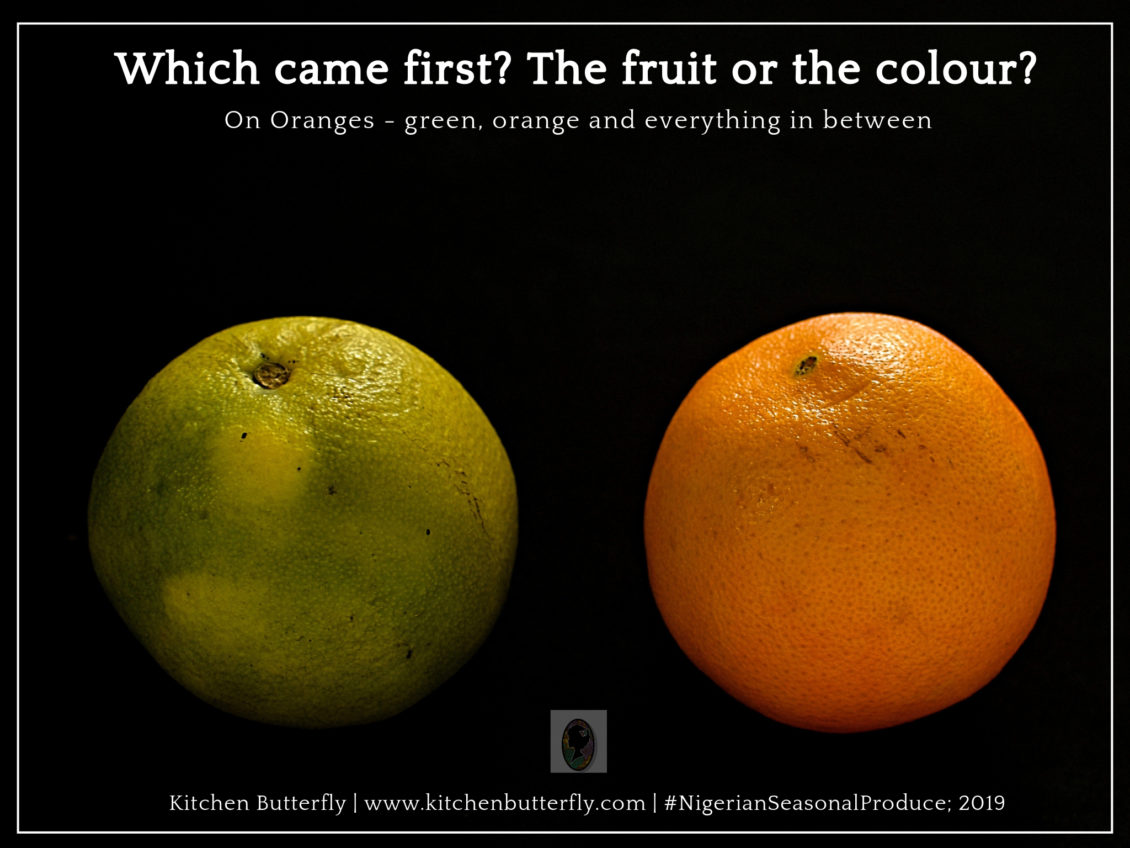Imagine this: You’re in a bustling market, vibrant with colors and aromas. You spot a beautiful, sun-kissed fruit, its name a familiar one – orange. Yet, holding it in your hand, you’re struck by a sudden thought: did the color orange get its name from the fruit, or did the fruit get its name from the color? It’s a curious question with a surprisingly fascinating answer, drawing on the story of human history, language, and our relationship with nature.

Image: www.grunge.com
To unravel this mystery, we must delve into the origins of both the color and the fruit, tracing their trajectories through time and across cultures. This journey will unveil the surprising truth about the color orange and how its connection to the fruit makes it a unique case in the world of color naming.
A Color Without a Name
Before the orange fruit came along, the color that we know today as orange didn’t really have a name. Ancient civilizations, even the Greeks and Romans who were masters at naming colors, lacked a specific term for what we now call orange. This is because the color itself was not as widespread in their daily lives.
The color orange, in its purest form, is a mixture of red and yellow, colors that were more prevalent in nature and thus more readily named. Early humans, living in close connection with the natural world, would have developed names for colors that they saw frequently in their landscapes, plants, and animals. Red, from blood and vibrant flowers, and yellow, from sunbeams and ripening wheat, were both common and easily recognizable.
However, the color orange, while present in certain sunsets and in the plumage of some birds, lacked such ubiquitous presence. It wasn’t until the emergence of the orange fruit, a treasure brought to Europe by explorers, that a unified concept of the hue truly emerged.
The Rise of a Citrus King
The orange fruit, native to Southeast Asia, was a relatively late arrival to the global stage. Despite its current popularity, it took centuries for the orange to navigate from its humble origins to become a beloved fruit enjoyed across the world.
The orange’s journey began in India, where it was cultivated for centuries. It was introduced to the Middle East through trade routes, and then to Europe thanks to the Arab conquests in Spain during the 8th century. From Spain, the orange slowly spread throughout the Mediterranean region, taking root in countries like Italy and Portugal.
Although the orange had been cultivated for centuries before reaching Europe, its impact on the continent was profound. Its sweet taste and rich color made it a popular addition to meals and desserts. The orange’s adaptability also meant that it could be grown in varied climates, contributing to the fruit’s widespread adoption.
Coloring the World
It was the orange’s arrival in Europe that truly sparked the identification of the distinct color. The fruit’s vibrant hue, so unlike other familiar colors, caught the attention of artists, writers, and scholars. Its bright orange skin, particularly when ripe, became a visual landmark, visually distinct from other fruits, and easily distinguishable from the more familiar red and yellow.
By the 16th and 17th centuries, the orange fruit was so prominent in European culture, it began to influence the way people perceived and described colors. Artists started to use orange in their paintings, capturing its vibrancy and capturing the spirit of the time. Writers began to use the word “orange” to describe the color, reflecting the growing cultural significance of the fruit.
The association between the fruit and the color became so strong that the word “orange” for the color became the most common term across Europe. The fruit’s unique hue, a blend of red and yellow, was now firmly ingrained in the vocabulary of color.

Image: www.kitchenbutterfly.com
A Fruit-Inspired Hue
While the exact origin of the term “orange” for the color remains debated – some argue that the word came directly from the Sanskrit word for “orange tree” – it’s clear that the fruit played a significant role in shaping our understanding of the color.
The orange fruit’s appearance, especially its vibrant, ripe color, provided a visual reference point that was lacking before. This led to the cultural association of the fruit with a specific hue, making the color, in a sense, a reflection of the fruit itself.
This unique relationship between a fruit and a color highlights the profound influence of our experiences with the natural world on our perceptions of color. Colors are not abstract concepts; they are imbued with meaning and associations shaped by our encounters with the world around us.
A Legacy of Color
Today, the orange fruit and the orange color remain inextricably intertwined. The vibrant orange that we all recognize is a visual representation of the sweet, juicy fruit that has delighted generations. From the sunny hue of a ripe orange to the orange glow of a sunset, the color evokes feelings of warmth, joy, and a connection to nature.
The story of the color orange is a fascinating testament to the power of language and culture to shape our perceptions of the world. It’s a reminder that color, like other aspects of language, is not static but evolves, changing as our experiences and understanding of the world itself change.
What Came First The Color Orange Or The Fruit Orange
Conclusion
So, what came first, the color orange or the fruit? While the answer arguably lies in a complex interplay of cultural and linguistic factors, the orange fruit’s arrival on the world stage undeniably played a crucial role in solidifying the orange color’s place in our vocabulary. The story of the color orange is a testament to the enduring influence of nature on human perception and the powerful connections we forge between the world around us and the language we use to describe it.





